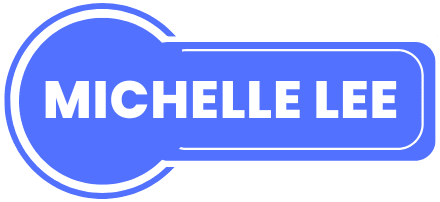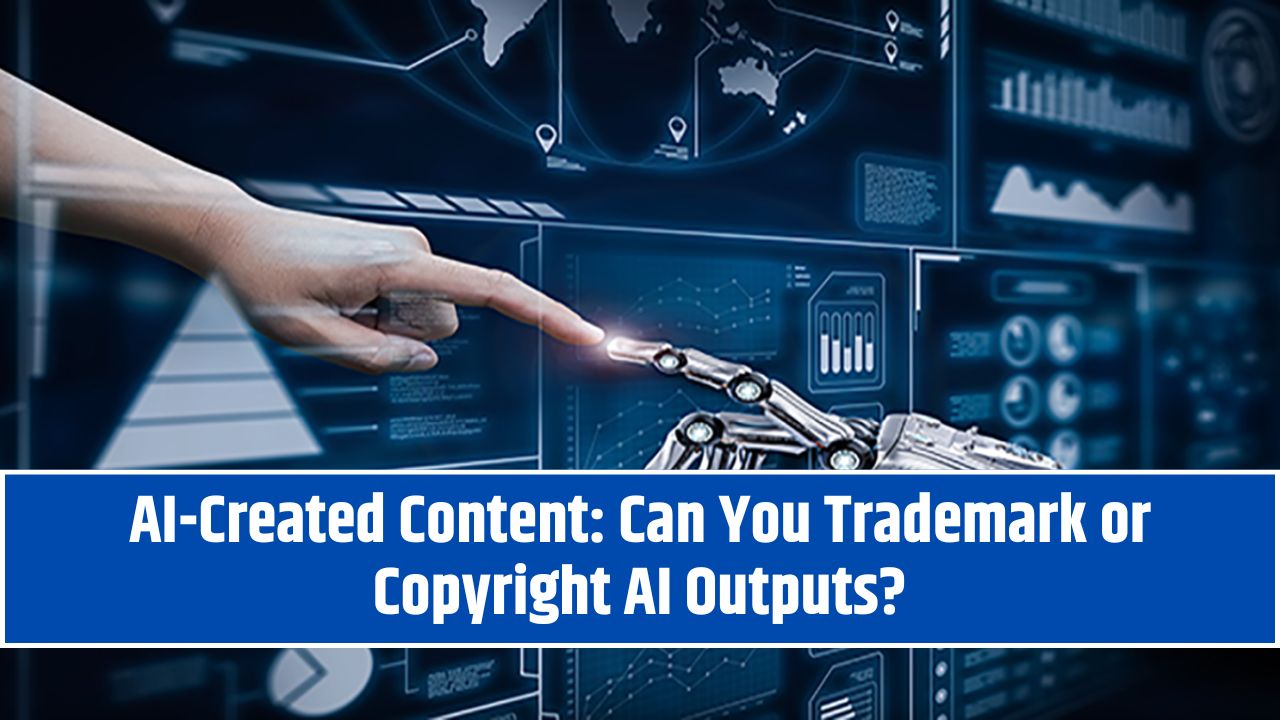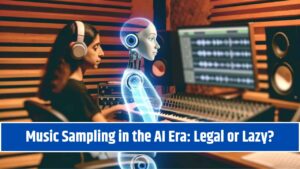“So… who owns what the robot writes?”
If you’ve ever used AI tools like ChatGPT, Midjourney, or any of the zillion content generators popping up online, this question has probably crossed your mind. Maybe you used AI to write a killer blog post, generate a logo, or even craft an entire eBook. And then the real question hit you:
Can I protect this?
Can you trademark, copyright, or own content created by artificial intelligence?
The short answer?
Maybe… kinda… not really — but also sometimes.
(Yep. Welcome to the legal twilight zone of intellectual property.)
Let’s break this down like humans do — casually, clearly, and with a touch of caffeine-fueled honesty.
First, Let’s Define the Basics
Before we jump into courtrooms and copyright claims, here’s a lightning-fast rundown of the two big protection categories:
Copyright
Protects original creative works — writing, art, music, designs, code, etc.
Trademark
Protects brands and identifiers — names, slogans, logos, etc.
Now toss AI into that mix, and things get weird.
Who Actually Owns AI-Generated Content?
This is the million-dollar question. Let’s look at what the law says… or rather, what it doesn’t.
In the U.S. (and many other countries):
The U.S. Copyright Office has made it clear:
Only works created by humans are eligible for copyright protection.
Translation? If your blog post, song lyrics, or AI-generated painting was made entirely by an AI tool — no copyright for you.
In fact, there have been real legal cases about this.
Real Example: Thaler v. Copyright Office
Dr. Stephen Thaler submitted a copyright application for a piece of artwork created by an AI system he built, called “Creativity Machine.”
The U.S. Copyright Office’s answer?
Hard no.
They ruled that non-human authorship can’t be protected under U.S. law.
That set a precedent: No human, no copyright.
So If You Use AI Tools Like ChatGPT, What Happens?
Here’s where things get tricky but hopeful.
If You Guide the Process, You Might Own It
Let’s say you write a blog post using AI — but you:
- Created the idea
- Directed the prompts
- Edited the results
- Added your own creativity, structure, and polish
Then you have a case to claim copyright ownership, because the final work includes human authorship — even if AI helped along the way.
That’s what the Copyright Office calls a hybrid work — part-human, part-AI, and potentially copyrightable if the human input is substantial.
Pro Tip: Document your input. Save prompts, notes, outlines — anything that shows your creative contribution.
Fully AI-Generated? No Copyright Protection
If you just hit a button and publish what the AI spits out — and you didn’t meaningfully modify it — you likely have no rights over the content.
That means:
- Anyone else could technically copy and use it
- You can’t stop them
- You can’t license or sell it as your exclusive IP
Yikes, right?
What About Trademarks?
Here’s the brighter side.
If you generate a logo, brand name, or slogan using AI — and you plan to use it in commerce (like, actually on your product or service), you can potentially file for a trademark.
BUT — and this is important — the AI’s role must be seen as a tool, not a creator.
Trademark Eligibility Depends On:
- Your commercial use of the content
- Distinctiveness of the mark
- Whether the AI was just a helper, not the “author”
So if you generated a logo with DALL·E or a slogan with ChatGPT, and you’re now using it on a business or product — you might get the trademark. But you’ll need to show you are the business or creative force behind it.
Global Perspectives: Not All Laws Are the Same
Some countries are exploring more flexible takes.
- UK & Australia: Have discussed extending copyright to computer-generated works under some conditions.
- EU: Is still developing guidance — especially around AI in creative industries.
- China & Japan: Taking active steps to regulate AI content rights (though enforcement remains foggy).
TL;DR: The U.S. leads the “no-AI-authorship” policy, but other countries are watching closely — and this space is moving fast.
What This Means for Creators, Entrepreneurs, and Brands
If you’re using AI to create content for your business, here’s the key takeaway:
Treat AI like a creative intern, not your co-author.
You can build on its outputs, remix its ideas, polish its drafts — but you need to leave your fingerprints on the final work to protect it.
That means:
- Don’t publish raw outputs
- Add your personality, voice, structure
- Combine with original human-made work
- Keep records of your involvement
What You Can Do (Cheat Sheet)
| Can I…? | Answer |
|---|---|
| Copyright raw AI-generated text | Nope |
| Trademark a logo made with AI | Possibly, if used in commerce |
| Copyright AI-assisted writing | If substantial human input |
| Sell AI-generated art as NFT | But no copyright protection |
| Claim exclusive rights over AI image | Not unless you altered it |
Best Practices to Protect AI-Involved Work
- Always add human value.
Don’t just copy-paste — rewrite, remix, and reframe it. - Keep a creative trail.
Save prompts, drafts, outlines, and notes. - Register what you can.
Trademarks, business names, and original edits? Register them. - Use AI as a creative partner, not the final source.
Treat it like a brainstorming buddy, not a ghostwriter.
The Future? It’s Murky, But It’s Moving
Legal frameworks are wildly behind the technology curve right now. But change is coming. Expect new legislation, court decisions, and policies that address:
- Shared ownership between humans and AI
- Rights for AI-generated content used in commercial projects
- Industry standards for transparency and disclosure
In the meantime, the safest strategy is to build human-AI hybrid work that reflects your unique voice, brand, or expertise.
Final Thought: Your Creativity Still Wins
AI can help you brainstorm, write, design, compose — even surprise you. But the magic still happens through you. That human spark? That’s the only thing copyright law still protects.
So go ahead — use the robot. Just don’t let it do everything.
Because when it comes to ownership, originality isn’t just about output — it’s about authorship.




